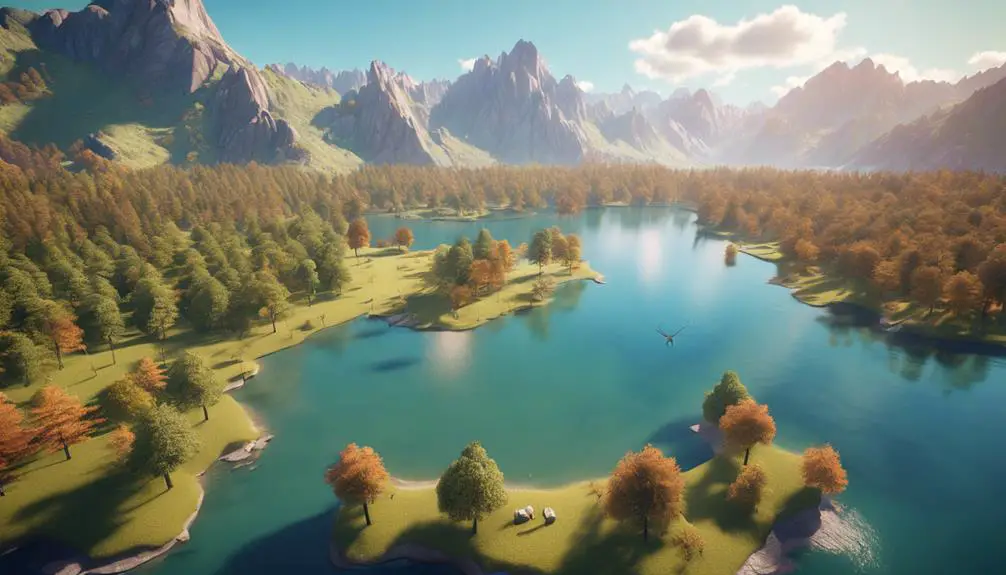You can't fly a drone freely in a national park, as strict regulations exist to protect wildlife and the environment. Many parks prohibit drone use entirely, while others have specific areas and times when flying is allowed. It is crucial to check local regulations before attempting to fly, as violations can result in fines. Drones can disturb animals and disrupt the park's natural beauty, which is why some locations are off-limits. If you're curious about the rules and potential permits, there's more information that can help you navigate this topic effectively.
Overview of Drone Regulations
Flying a drone in a national park isn't as simple as just taking off; strict regulations are in place to protect the environment and wildlife. You might feel the thrill of soaring above breathtaking landscapes, but it's essential to understand that your freedom is balanced with responsibility. Many parks prohibit drone use entirely, while others have designated areas or specific times when you can fly. If you're considering capturing stunning aerial views, check local regulations first—getting caught can lead to hefty fines. Remember, these rules exist to maintain the park's natural beauty and safeguard its inhabitants. So, while the sky's the limit, respecting these guidelines guarantees that future generations can enjoy the same freedom you cherish today.
National Park Service Policies
Understanding the National Park Service policies is essential for anyone looking to fly a drone in these protected areas. These regulations are designed to protect wildlife, preserve natural landscapes, and guarantee visitors' safety. If you want the freedom to capture breathtaking vistas, you've got to respect these guidelines.
Consider these key points:
- Wildlife disturbances: Avoid disrupting animals in their natural habitats.
- Quiet moments: Drones can shatter the tranquility of nature.
- Flight zones: Some areas are off-limits for flying.
Common Prohibited Areas
Certain areas within national parks are strictly off-limits for drone use, often to protect sensitive ecosystems and enhance visitor experiences. You'll find that areas like wildlife refuges, historic sites, and campgrounds typically restrict drone flights. These zones help preserve the natural beauty and tranquility that draw people to these parks. Additionally, you should steer clear of areas near visitor centers and trails, where drone noise can disrupt enjoyment. Remember, it's not just about the freedom to fly; it's about respecting the environment and fellow park-goers. So, before you launch your drone, check the specific regulations for the park you're visiting to guarantee you're flying where it's allowed. Embracing these guidelines keeps the experience enjoyable for everyone.
Permits and Permissions
Before you take to the skies with your drone in a national park, you'll need to check if you require any permits or permissions to guarantee compliance with regulations. Steering through the rules can feel restrictive, but understanding them will secure your freedom to explore.
Here are some things to reflect on:
- National Park Service regulations that may apply
- Specific park guidelines that detail drone usage
- Application processes for permits that could take time
Safety Guidelines for Drone Use
When flying a drone in a national park, it is crucial to follow safety guidelines to protect both wildlife and visitors. First, maintain a safe distance from people and animals—avoid startling wildlife or disrupting their habitats. Keep your drone within sight at all times; this helps you respond quickly to any issues. Also, respect designated no-fly zones, often marked due to sensitive areas or ongoing activities. Check weather conditions to guarantee safe flying and avoid strong winds. Finally, always be prepared for emergencies; know how to land your drone safely if it loses connection or battery. By adhering to these guidelines, you can enjoy the freedom of flying while guaranteeing a safe experience for everyone.
Environmental Impact Considerations
Flying a drone in a national park can greatly impact the delicate ecosystem, so it's essential to reflect on how your actions might affect wildlife and natural habitats. These beautiful places are home to countless species and fragile landscapes, and your drone can disturb their peace. Consider the following potential impacts:
- The sudden noise of buzzing propellers startling a family of deer grazing peacefully.
- Nesting birds abandoning their eggs due to the overhead intrusion.
- Footprints left in pristine areas, disrupting the natural flow of the environment.
While the freedom to explore is enticing, prioritizing the well-being of these natural treasures guarantees they remain for future generations to cherish.
Alternatives to Drone Photography
Many outdoor enthusiasts find that traditional photography methods can capture stunning landscapes without the need for a drone. Consider using a high-quality DSLR or mirrorless camera with a versatile lens. You can explore different angles and perspectives by hiking to elevated spots or unique vantage points. Don't underestimate the power of your smartphone; modern phones have excellent cameras that can produce breathtaking shots.
Experiment with long exposures to create dreamy water effects or use filters to enhance colors. Embrace the freedom of exploring nature at your own pace, taking the time to connect with your surroundings. Each click of the shutter can reveal the beauty around you, proving that you don't need a drone to achieve incredible photography.

